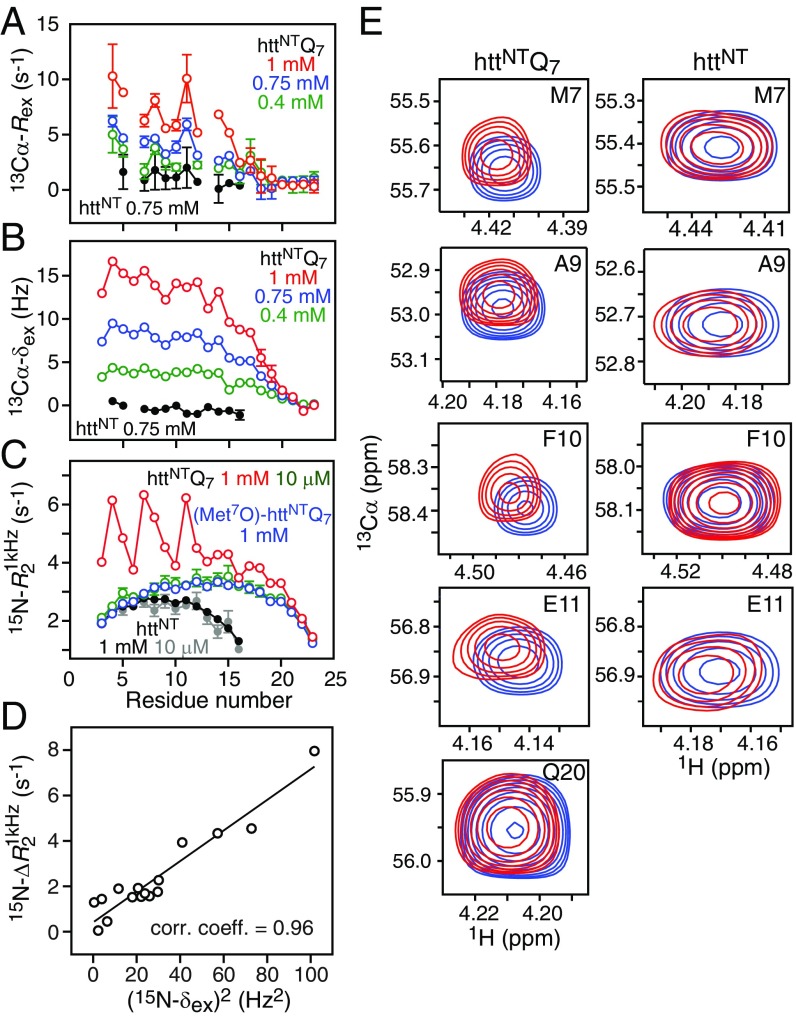Fig. 2.
Concentration-dependent exchange dynamics of httNTQ7 observed by NMR. (A) 13Cα exchange line-broadening measured by CPMG relaxation dispersion at 600 MHz and (B) 13Cα exchange induced shifts (13Cα-δex = δobs − δref) for httNTQ7 (800 MHz) at three concentrations (0.4, 0.75, and 1 mM) and httNT (900 MHz) at one concentration (0.75 mM) and 5 °C. For httNTQ7, the reference shifts, δref, in the absence of exchange were determined by fitting the concentration dependence of the observed shifts, δobs, for each residue to a second-order polynomial (SI Appendix, SI Materials and Methods); for httNT, the reference shifts are obtained from the spectrum recorded on a 20 μM sample. (C) transverse relaxation rate profiles obtained from 15N-R1ρ measurements at 600 MHz and 10 °C recorded with a spin-lock radiofrequency field strength of 1 kHz for httNTQ7 (10 μM and 1 mM), (Met7O)-httNTQ7 (1 mM), and httNT (10 μM and 1 mM). (D) Correlation of and (15N-δex)2 for httNTQ7 at 800 MHz and 5 °C. (E) Expansion of selected regions of the 900-MHz 1H–13C constant time HSQC spectra of 0.8 mM (blue) and 20 μM (red) samples of httNTQ7 (Left) and httNT (Right) at 5 °C. Error bars represent 1 SD (when not shown, they are within the circles representing the experimental data).

